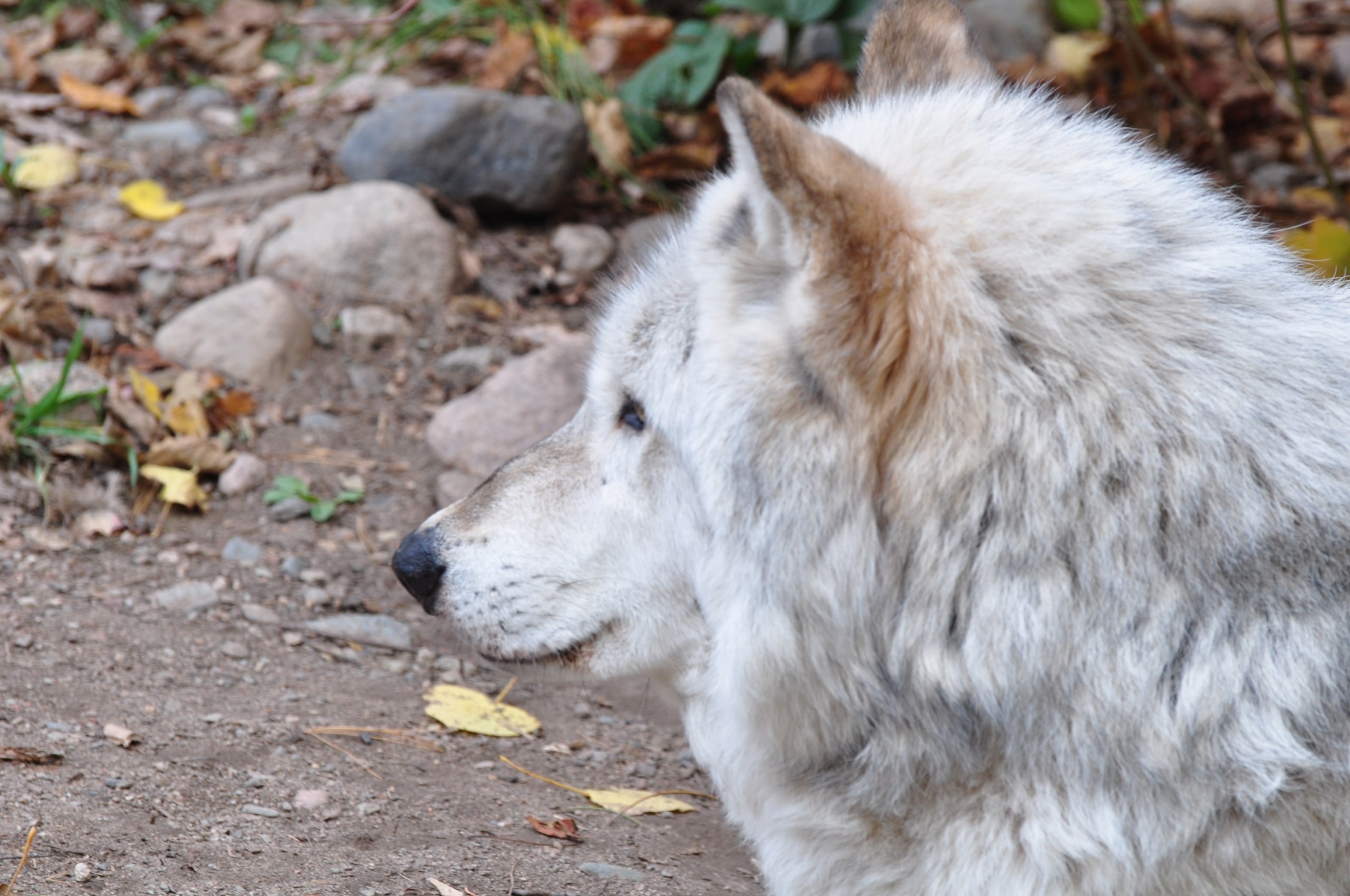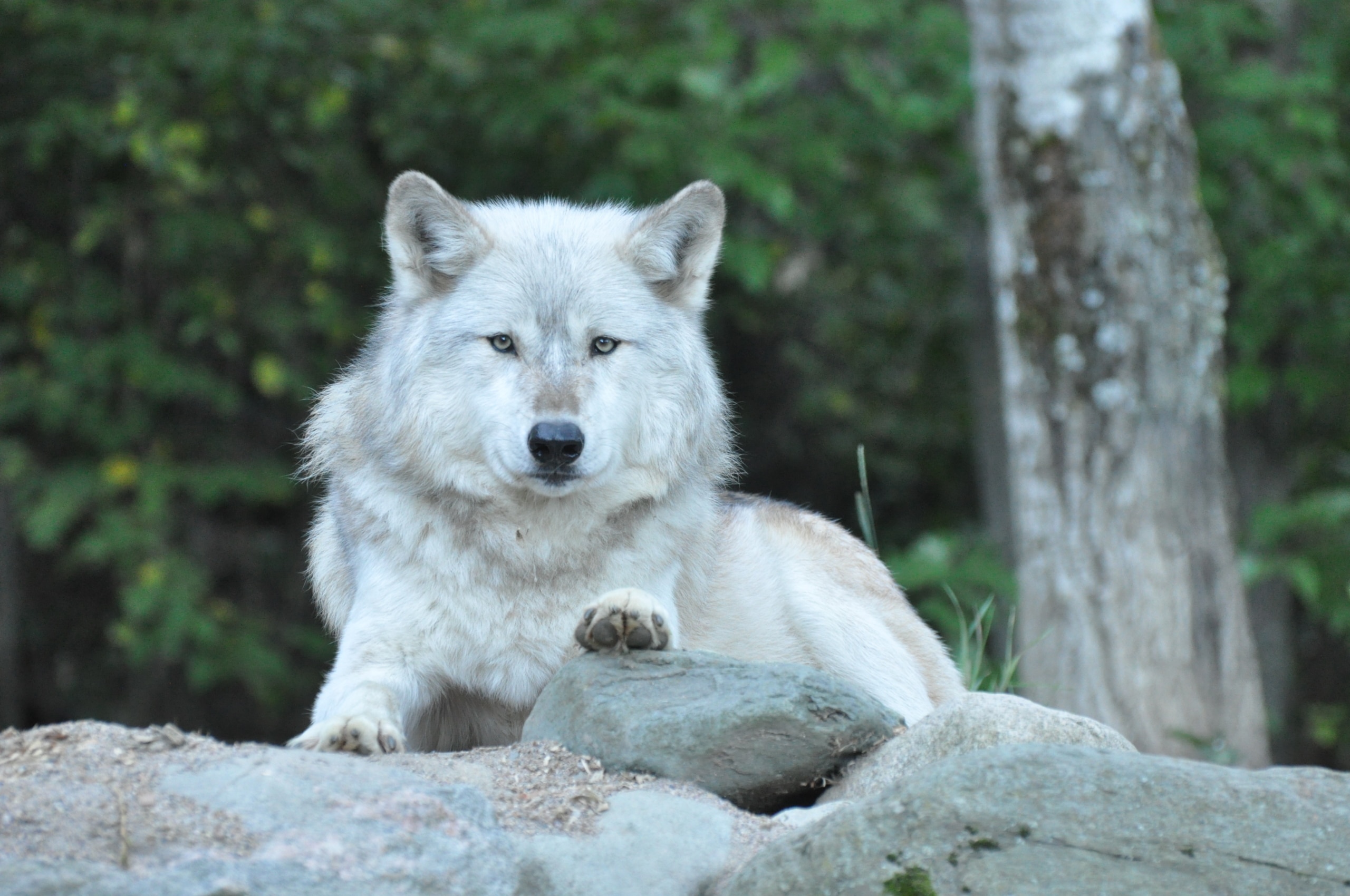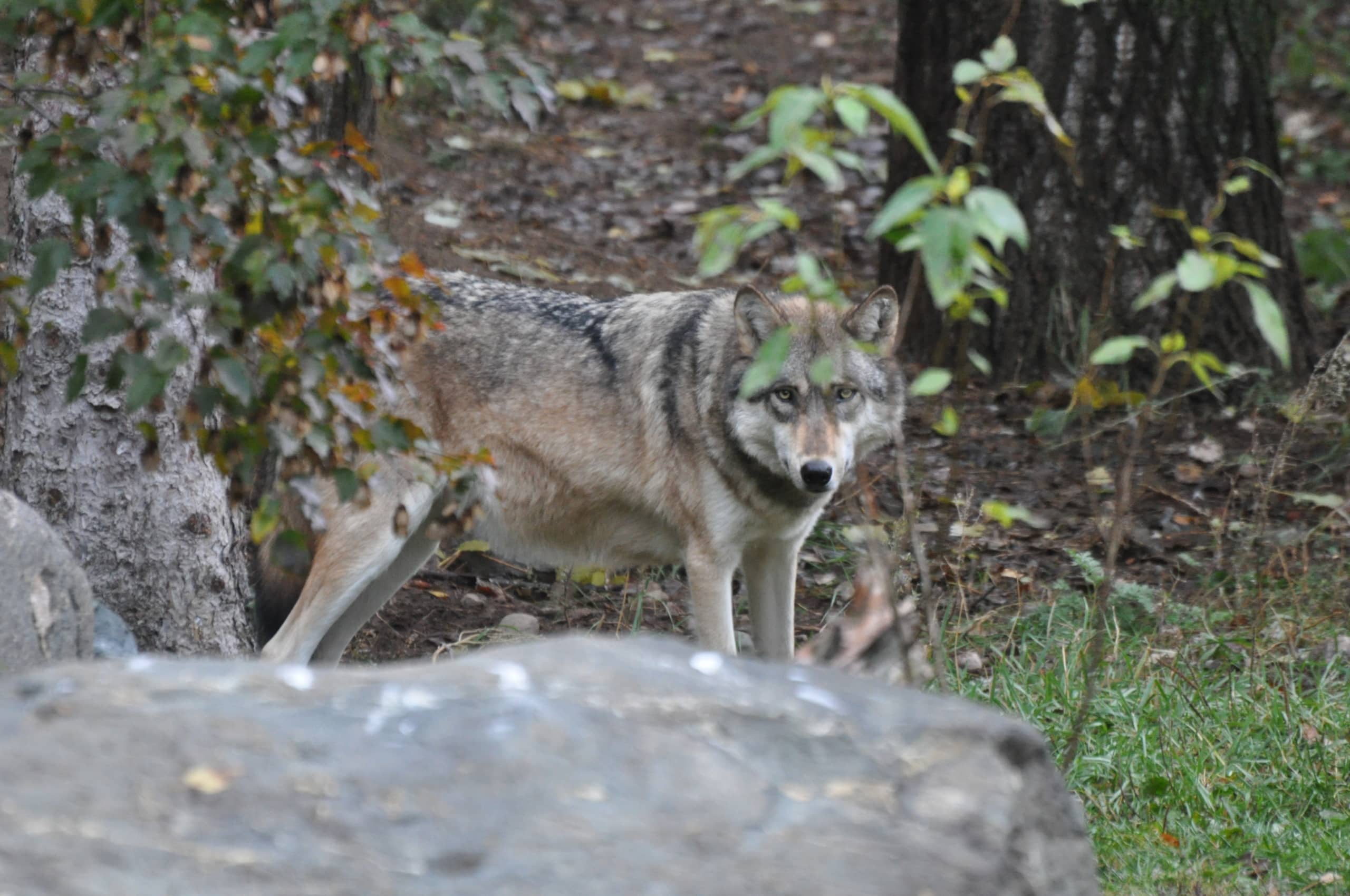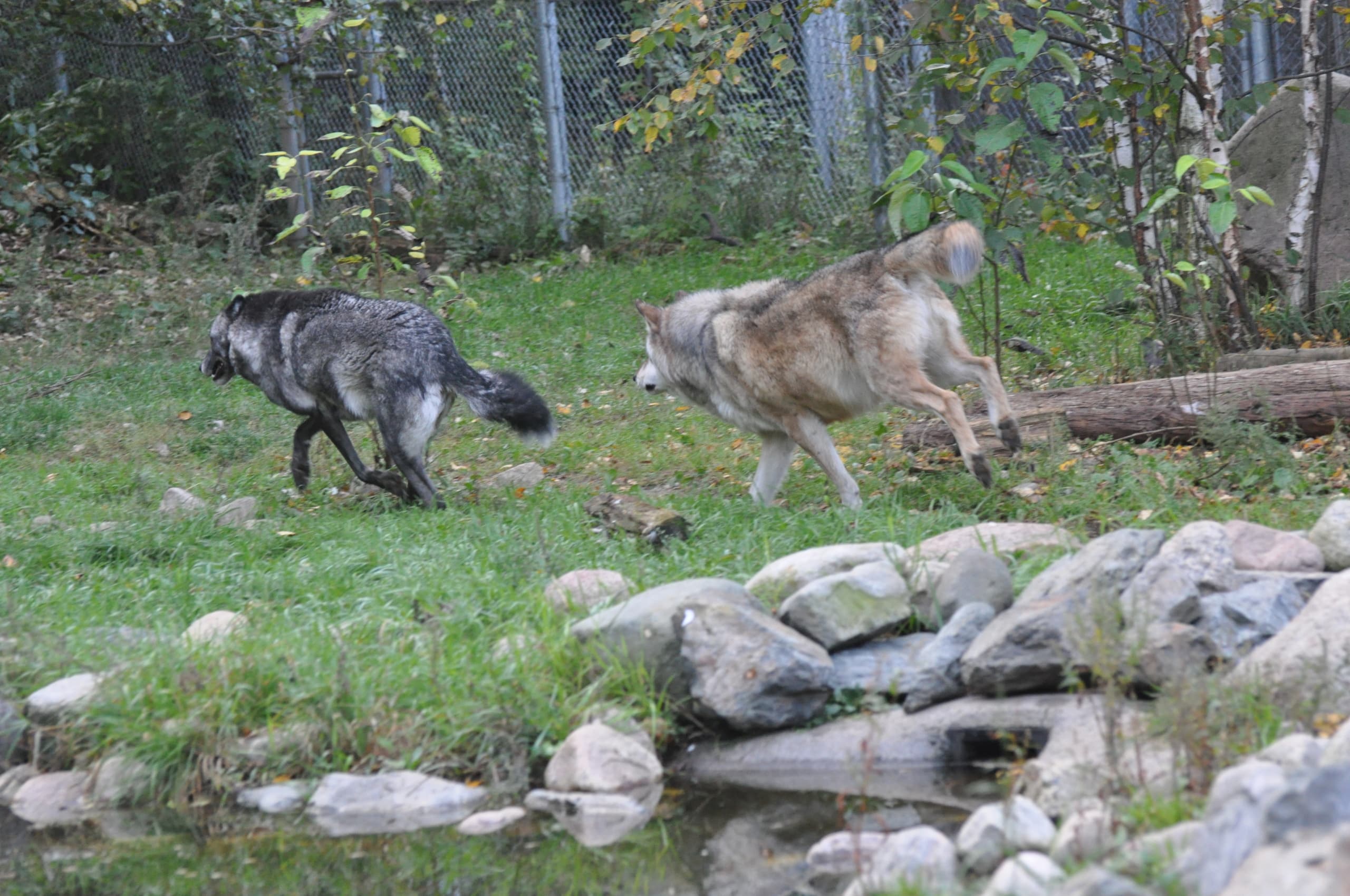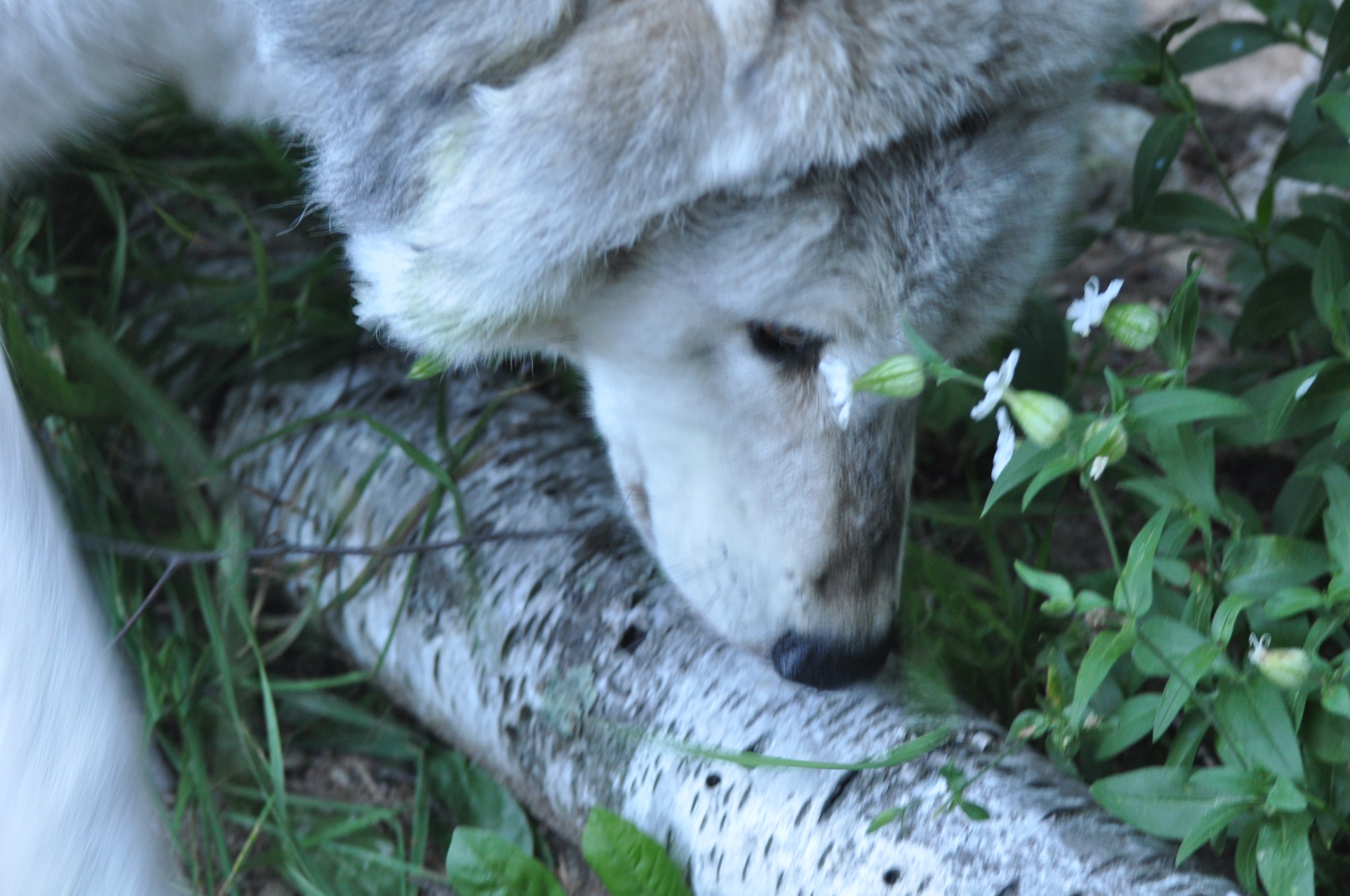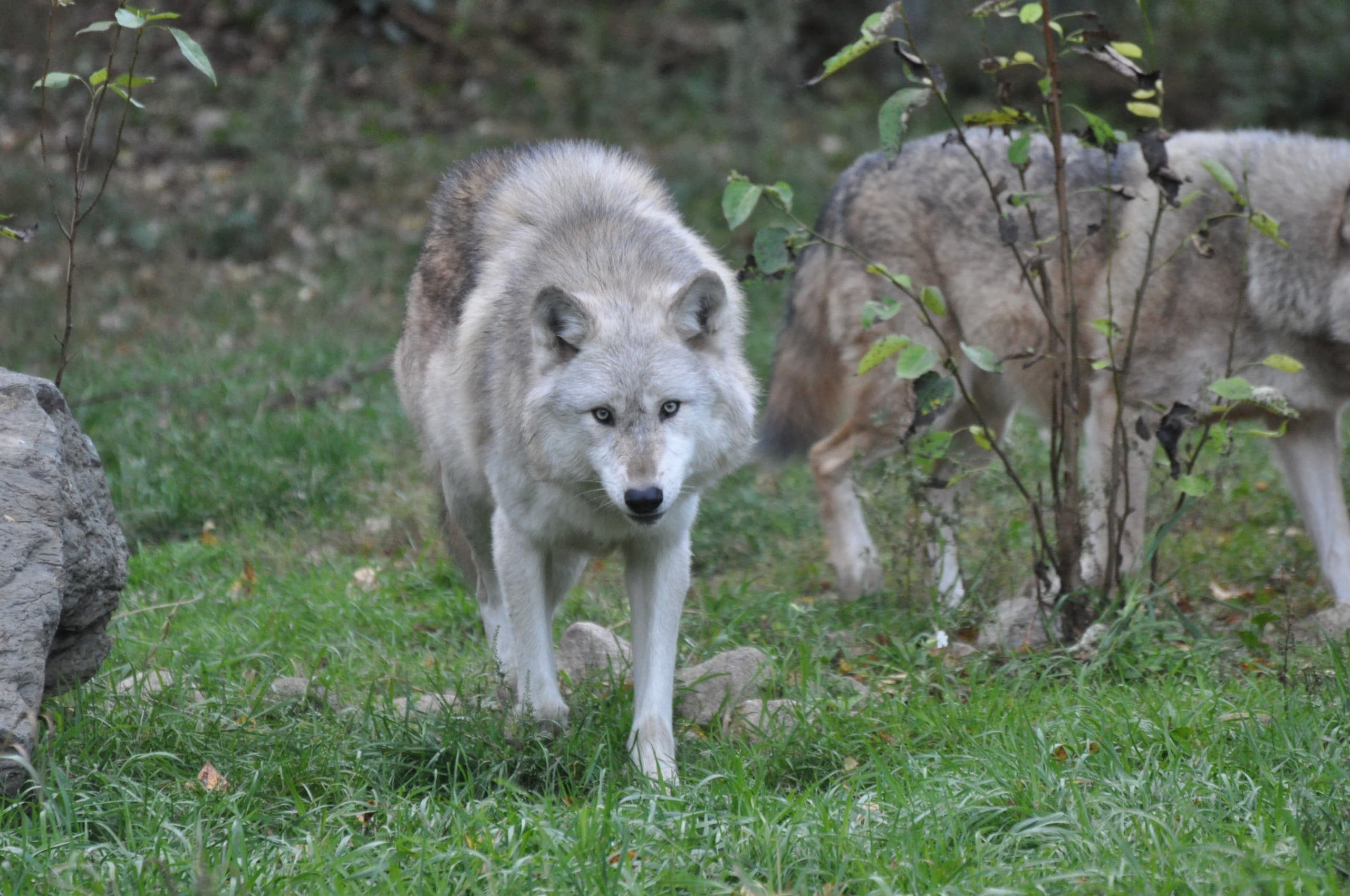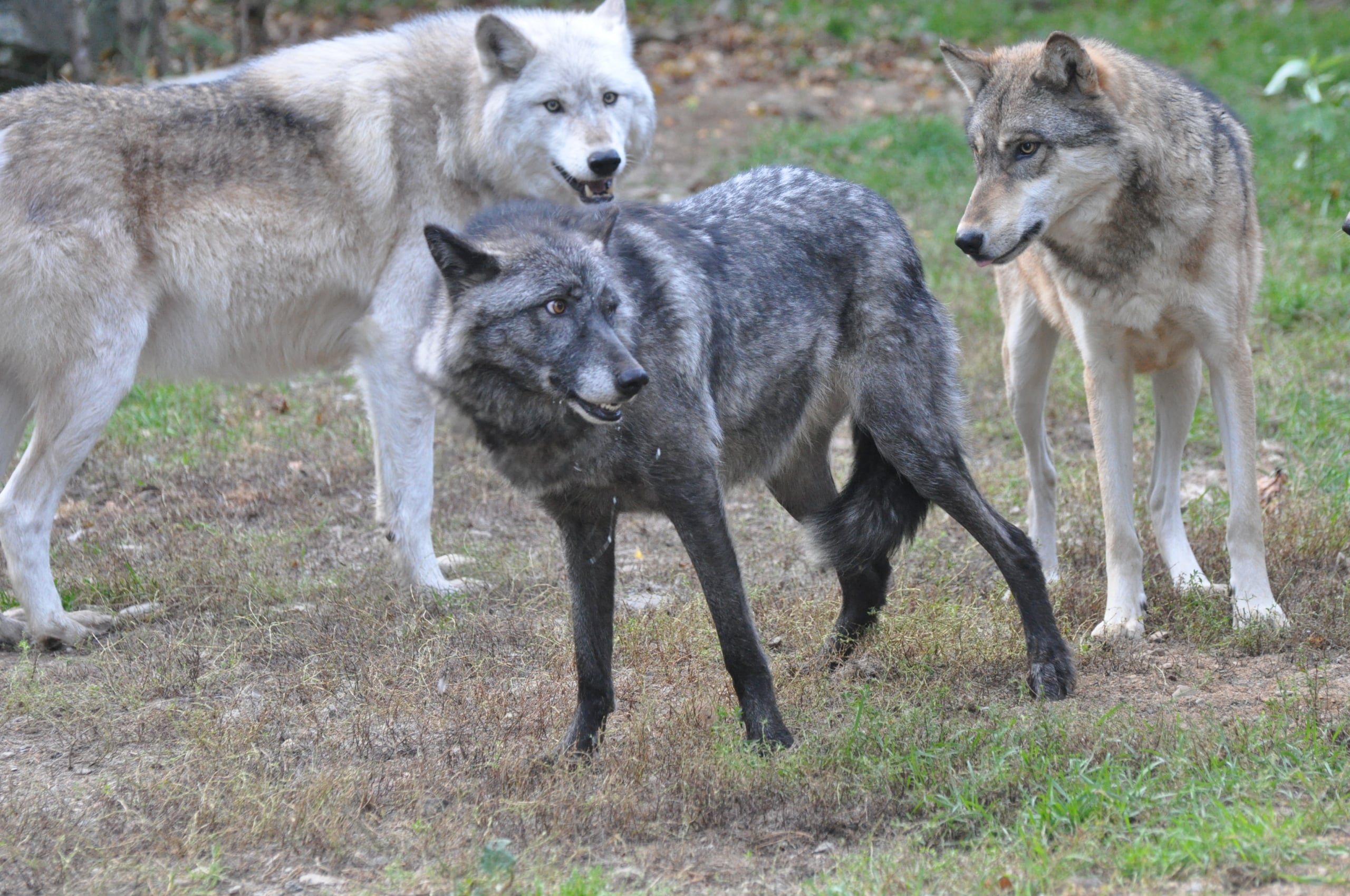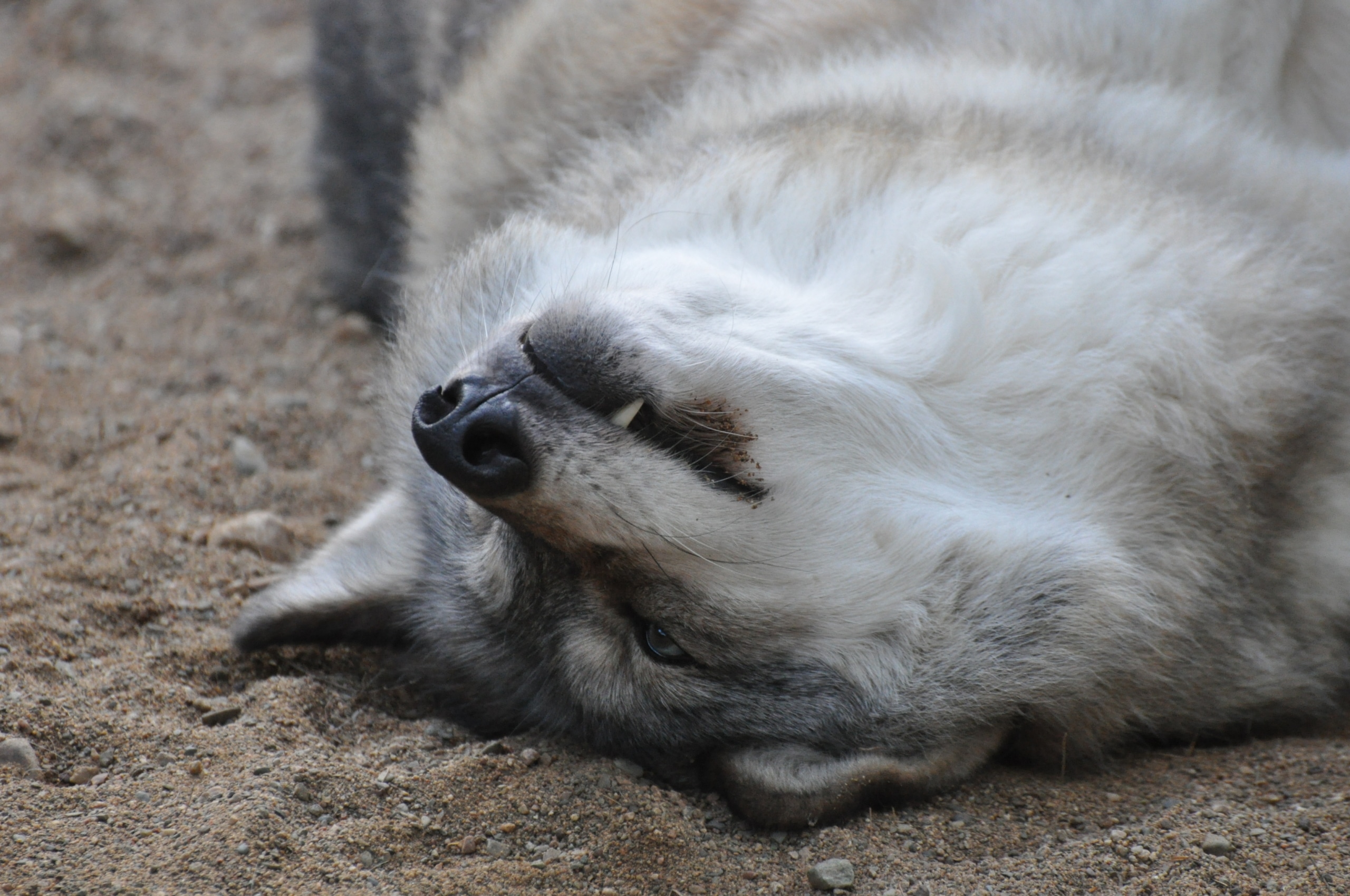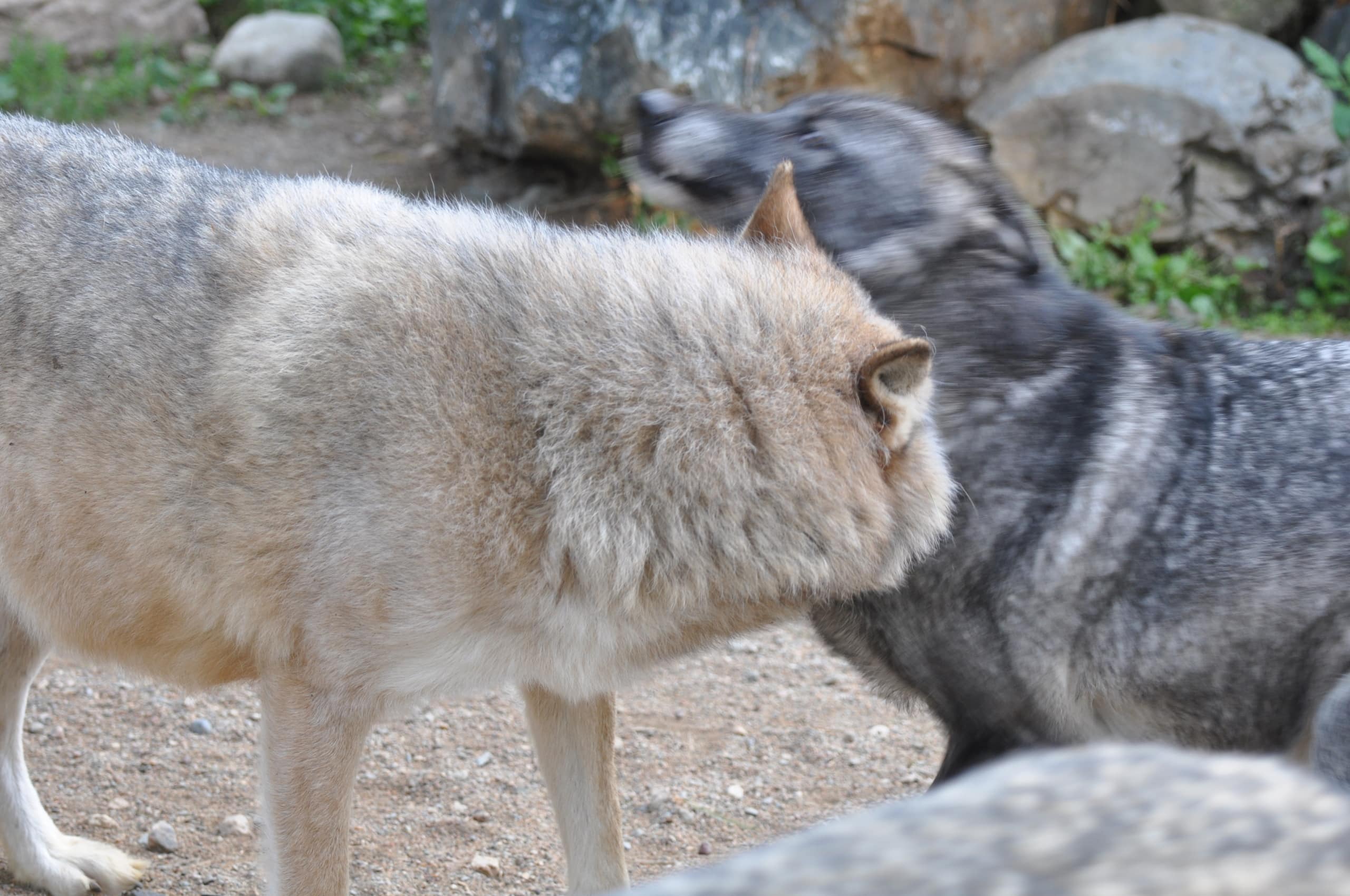Grizzer and the rest of our Ambassador wolves have received their first of many straw bales of the winter. We add straw to the enclosures every winter to ensure that the wolves have a warm place to rest on a cold or damp night. These straw piles tend to be added in the den a few times, as well as their favorite spots in the enclosure. Grizzer quickly padded and shifted his straw piles around to his liking, and has been using his den more than usual with this new bedding layer. This can provide more viewing opportunities on our webcams as well, you can see Grizzer’s den right from our website on our wolf webcam page!
Archives
We have been working hard in recent weeks to finish a cement housing for an above-ground UV Light filter for the pond. This filter will assist in killing algae that grows in the pond during the summer, which allows us to reduce the amount of times it has to be drained and cleaned, and thusly reduce costs for the water needed to refill it each time. Because of this, we’ve had a temporary fence enclosure set up inside the exhibit pack’s area, which Denali has investigated numerous times. We are still waiting on a few parts, and so the fence will remain up as we complete this project. We try to make our temporary fences as wolf-proof as possible, but the Ambassador Wolves have, in the past, shown that they can outsmart our barriers every now and then. For now though, Denali appears to be unable to thwart this fence line.
As shown in this week’s youtube video, Boltz opportunistically tests Aidan. If Aidan is preoccupied with dominating another wolf (often Luna, but sometimes Denali as well), Boltz may attempt to ride up, or otherwise test Aidan’s status. With pups on the way next year, it’s important that we keep Aidan as calm and stress free as possible, because as Aidan’s confidence wanes, it opens up more opportunities for Boltz to test his status.
As we’ve mentioned in previous logs, Aidan has been going through treatments to assist his digestive system. Several weeks ago we saw a wolf that was, while still a social and strong leader, was less inclined to greet and exert a lot of energy. As of recent, we’ve seen Aidan return to his more normal self, actively participating in, and even starting many chases. With the treatments, his digestive issue seems to be improving, and his confidence appears to be much higher. We’re very pleased with how Aidan has responded to the new medications, and will continue treatments for now.
I know we can’t reverse the signs of aging, but in Grizzer’s case, his improvement in his physical condition has him acting like a middle-aged wolf instead of a wolf entering the “Golden Years” of his life. It’s hard to believe that earlier this summer we saw Grizzer with no energy, no interest in interactions or on some days, no interest in taking a daily meatball. Since his Milk Thistle treatment, nothing gets past Grizzer; He is aware of every action within the wolf yard and every person who enters the lab. The nice thing is, his response is not negative, just alert. We are so anxious to see the capital campaign construction begin so Grizzer can expand his world into the wolf lab. This stimulus will be so helpful in keeping his mind alert as his body ages.
Denali is in a unique position within the pack. He is a true litter mate to Aidan and is subordinate in that relationship. If Denali attempts to show some dominance, Aidan is quick to remind him of his lower rank. Denali will often respond with a drop of the head and a quick submissive paw acknowledging the message. These are calm communications that help define the pack order. Unfortunately, Denali is also the recipient of redirection aggression that can be expressed when Aidan’s tension increases. How can wolf care staff tell the difference? We look for the hackles. Hackles are defined as the ridge of hair that is located on the middle of the back, starting at the neck and extending to the tail. Hackles are not a voluntary response, but are believed to be the influence of the “arrector pili” muscles attached to hair follicles, stimulated by the nervous system, triggered by adrenaline. The flight or fight response can be another description when assessing hackles. Typically the response of hackles is not aggression, but one of fear, insecurity and defensive response to the action of others. In our Ethogram, we code behaviors based on their presence on the neck (H-1), shoulder -mid-back (H-2), rump (H-3) and tail (H-4). A hackle code of H- 1,2.3.4 tells wolf care staff they need to stick around and see what happens next.
Luna definitely gives visitors a glimpse of the social side of wolf behavior. In this week’s photo, she springs up from a play bow inviting any and all wolves to chase her. These interactions are becoming more frequent as the weather turns cooler. Luna is also displaying the classic “Canine Grin” on her face. Wolves are very expressive and interactions can start from a mere glance between individuals. Observing wolves requires a keen sense of awareness, noting the subtle responses that may stimulate behavior.
Boltz is known for being shy, somewhat timid around flies and often on the sidelines of activity. His intense eye stare is memorable for those who have had the honor of being face to face with him at the Center. Even watching YouTube videos, his shy personality is obvious. But, what we see when we interact with him is a wolf that seems to be constantly watching. He is quick to respond to an opportunity to show some status and demonstrates that in this week’s photo. Note Luna’s tucked tail while Boltz is “Standing Tall” with his “Ears Perked”. If we fast forward 3 or 4 years, he definitely has what it takes to be a pack leader.
The challenge of working with animals is that they can’t tell you when they’re not feeling well. An added challenge of working with wolves is that pack dynamics often prevents us from taking a wolf out of a pack structure to run a slough of diagnostic tests to find an answer. This is the dilemma we have with Aidan. We can observe symptoms and behavioral interactions and work on improving both. The latest treatment is designed to help him process partially digested food as it exits the stomach. He has had two treatments and so far, he seems to be responding well. This photo shows a relaxed and comfortable wolf check with Aidan.
This week’s photo doesn’t show Aidan’s face, but the ear postures of these two both show a little submission. In our interpretation, some of this submission may be the uncertainty of the impending interaction. This isn’t just a Luna and Aidan situation, we have several images of Shadow and Maya, our former pack leaders, with similar postures. The relationship of the dominant pair involves far more close encounters while greeting. With a young exuberant wolf like Luna, Aidan takes a cautionary stance until he see’s the next move.
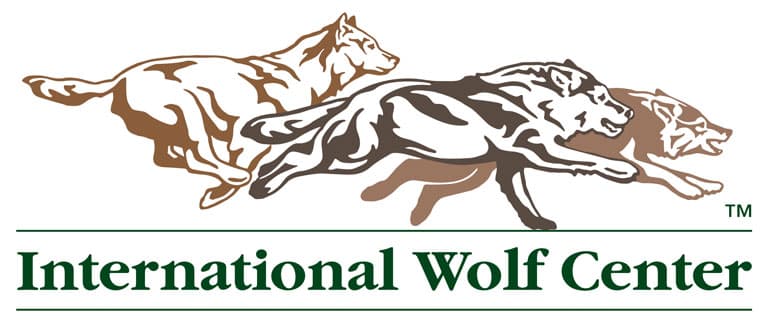
The International Wolf Center uses science-based education to teach and inspire the world about wolves, their ecology, and the wolf-human relationship.

